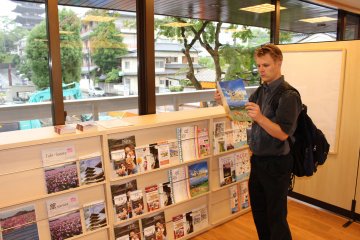
Pusat Pengunjung NARA Dibuka Pada Tanggal 23 Juli
Bryan BaierPusat Pengunjung NARA dibuka pada tanggal 23 Juli

NARA Visitor Center & Inn is located by the Sarusawa Pond in Nara City, a short walking distance from Kintetsu Nara station and Nara station. It is the hub for all travel resources when visiting Nara. If you have any questions, need travel recommendations, or are looking for transportation guidance this is the stop to make.
The visitor center offers services that will ease your travels in Nara. Find an ATM serving overseas cards and foreign currency exchange at the service counter. Drop your bags off at the baggage storage to rid the excessive weight off your shoulders as you explore the nearby areas. The travelers lounge is equipped with computers and i-pads available for use free of charge. If they are taken, use the free Wi-Fi, to start planning your adventure on your own devices. Find pamphlets and maps for basic information and tips on where to go. The multilingual staff are also extremely helpful and are happy to share the must-see sights and eats that you will not find in travel pamphlets.
In addition to the many services offered here, you will find daily walking tours and free cultural activities to participate in. This is a great chance to learn and experience the art of Ikebana (flower arranging), dress in a Tempyo gown, or challenge yourself with Japanese calligraphy. Take the free excursion buses available every Tuesday, Thursday, Saturday and Sunday until October 31st, for a ride to either Asuka Village or Mount Yoshino. The famous sights and activities are not limited to Nara City so don't miss out on this opportunity to explore all the beauty Nara Prefecture has to offer!
Located next to the Sarusawa Pond, it's a 5-6 minute walk from Kintetsu Nara Station or a 10-15 minute walk from JR Nara Station.

Pusat Pengunjung NARA dibuka pada tanggal 23 Juli

Pengalaman mencicipi buah musiman Nara di Nara Visitor Center & Inn
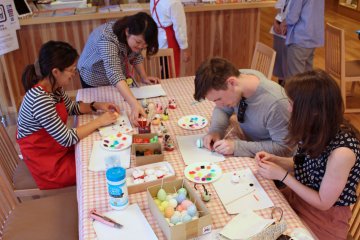
Pengalaman Belajar Gratis Membuat Lilin di Pusat Turis & Penginapan NARA
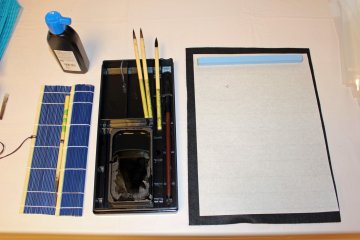
Pengalaman Belajar Kaligrafi Shodo Gratis di NARA Visitor Center & Inn di Nara

Pembuatan kertas "washi" diadakan secara gratis di NARA Visitor Center & Inn

Pengalaman Belajar Merangkai Bunga Ikebana Gratis di NARA Visitor Center and Inn
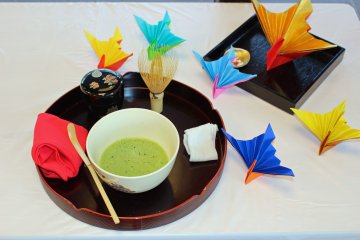
Upacara Minum Teh Gratis di Sekitar Taman NARA
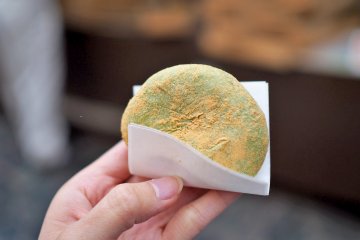
Penumbuk mochi super cepat oleh juara ahli pembuat mochi

Nara punya sejarah yang panjang dan kaya yang menunjukkan keragaman makanan unik yang menakjubkan


Nara Park was created in 1880 and is located in the city of Nara, which is easily accessible from Kyoto or Osaka. The vast area extends over 660 hectares and is known for its free-roaming deer and world-famous temples. Founded in 1880, it is home to many of Nara's top attractions, including Todaiji, Kasuga Taisha, Kofukuji, and the Nara National Museum. The game can be fed special treats and some animals even bow to the visitors. The more than 1000 deer from Nara, which are considered messengers of the gods, have become a symbol of the city and are even called a natural treasure.
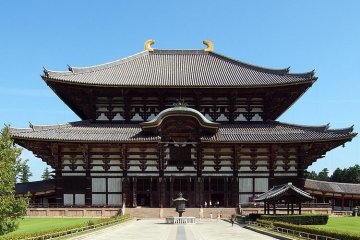
Todai-ji Temple, also known as the Great Eastern Temple, was originally built in 752 at the behest of Emperor Shomu. It is one of the most famous and historically significant temples in all of Japan and one of the landmarks of Nara. The Todai-ji Temple is a UNESCO World Heritage Site. Until recently, the main hall of Todai-ji, Daibutsuden, was the largest wooden building in the world. The massive structure houses one of the largest cast bronze Buddha statues (Daibutsu) in Japan, which is 15 meters tall. Another popular attraction is a pillar with a floor-level hole that is exactly the size of the Buddha's nostril. Whoever manages to squeeze through this opening will supposedly reach enlightenment in the next life.

The great Kasuga Shrine (Kasuga Taisha) is located in Nara Park. It was built at the same time as the capital and is dedicated to the deity responsible for protecting the city. The shrine was recognized as a UNESCO World Heritage Site in 1998. The most distinctive feature of the shrine is its 3,000 lanterns. Both stone lanterns and bronze lanterns were donated by believers and decorate the interior of the shrine. All 3,000 lanterns are lit twice a year. The first celebration in February (Setsubun Mantoro) represents the beginning of spring. The second celebration in August (Chugen Mantoro) honors the gentle transition into autumn. The shrine is also home to the Kasuga Taisha Museum, which houses some of the relics. This includes two sets of large, ornate drums.